More Powell River area exploring – beaches, and the historic Townsite
Day 40 of the trip, June 4th, would be my final full day on the upper Sunshine Coast, and I had a lot that I still wanted to see. Powell River’s historic Townsite was the main focus, but I also wanted to see more beaches and more forests.
There are a lot of public beach access trails along the Sunshine Coast, all marked with standardized signs. Some of them are trails that are barely visible, while a few are more major access points with parking lots. This one I found at the end of a road near the B&B I was parked at in Stillwater was one of the largest I’d seen.
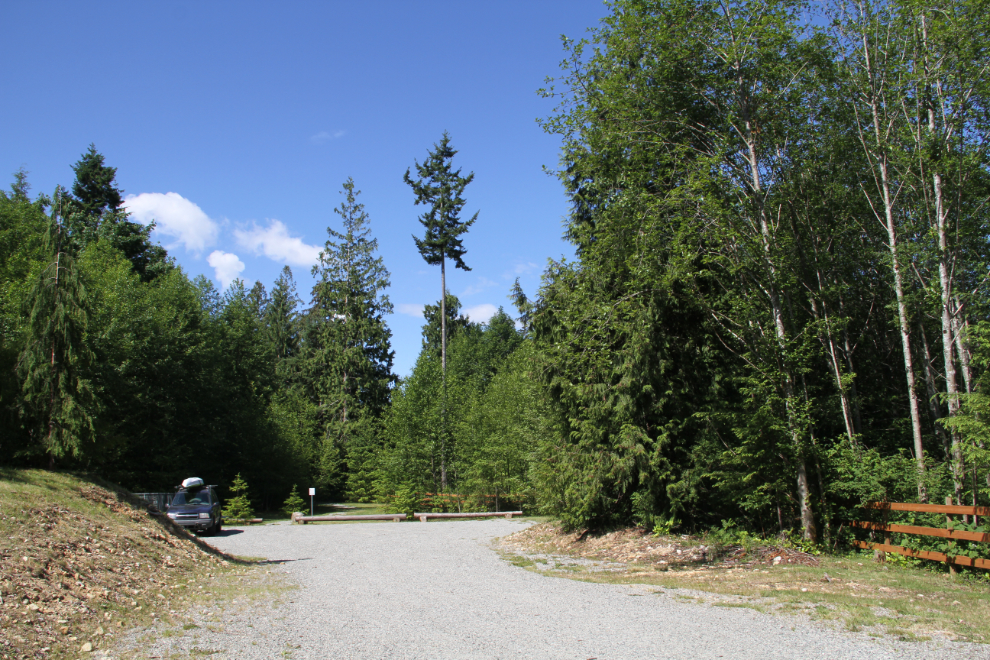
Judging by the number of large signs on the fences along the trail, the property owners aren’t happy with the presence of this one.
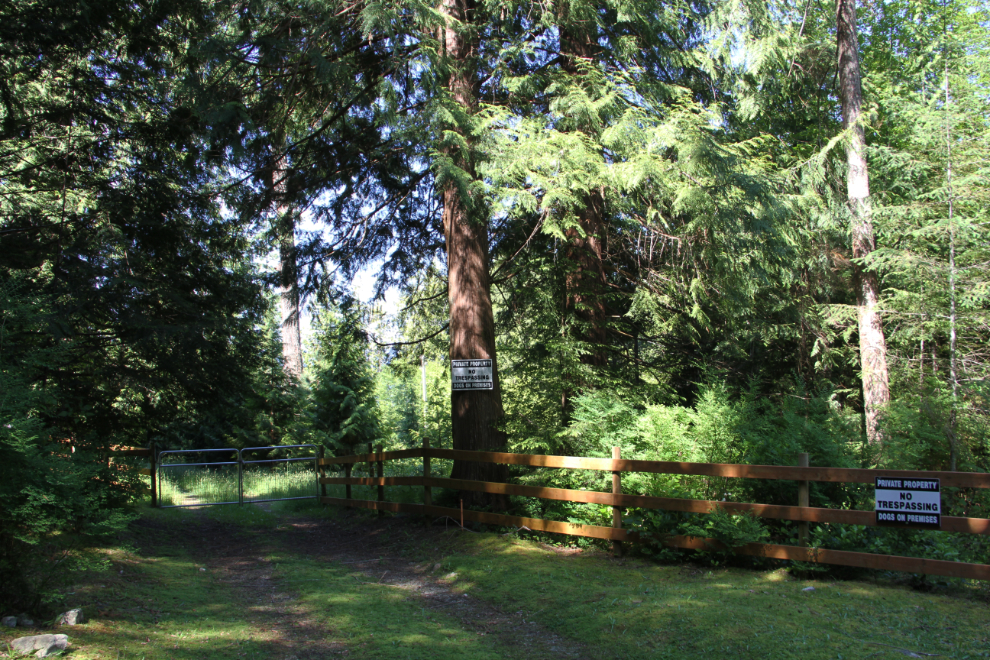
The beach is pretty typical for the area.
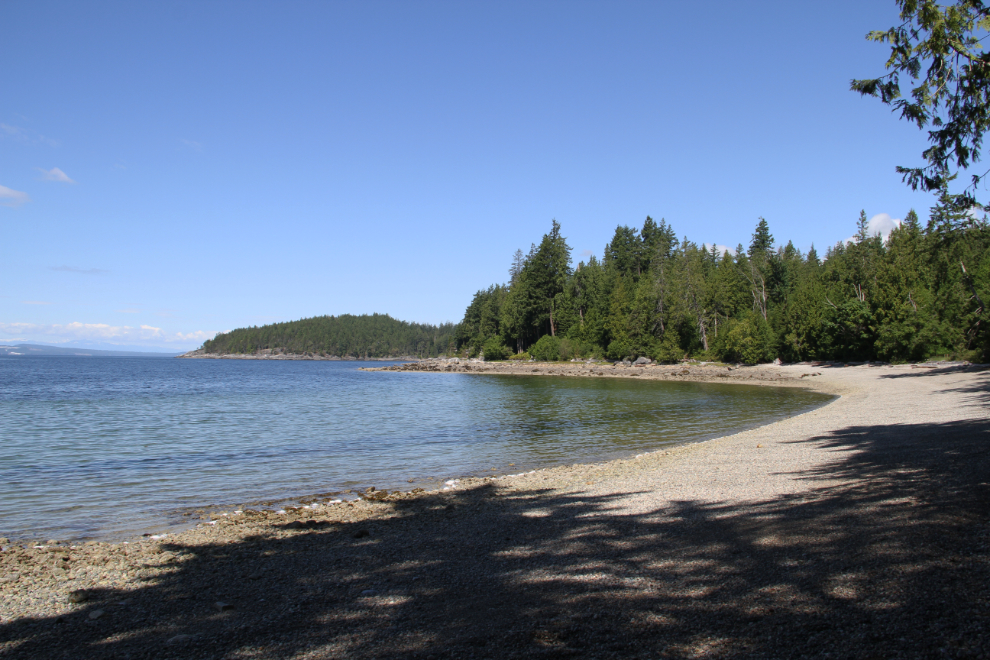
A closer look at the gravel, mostly granite, that makes up most of these beaches.
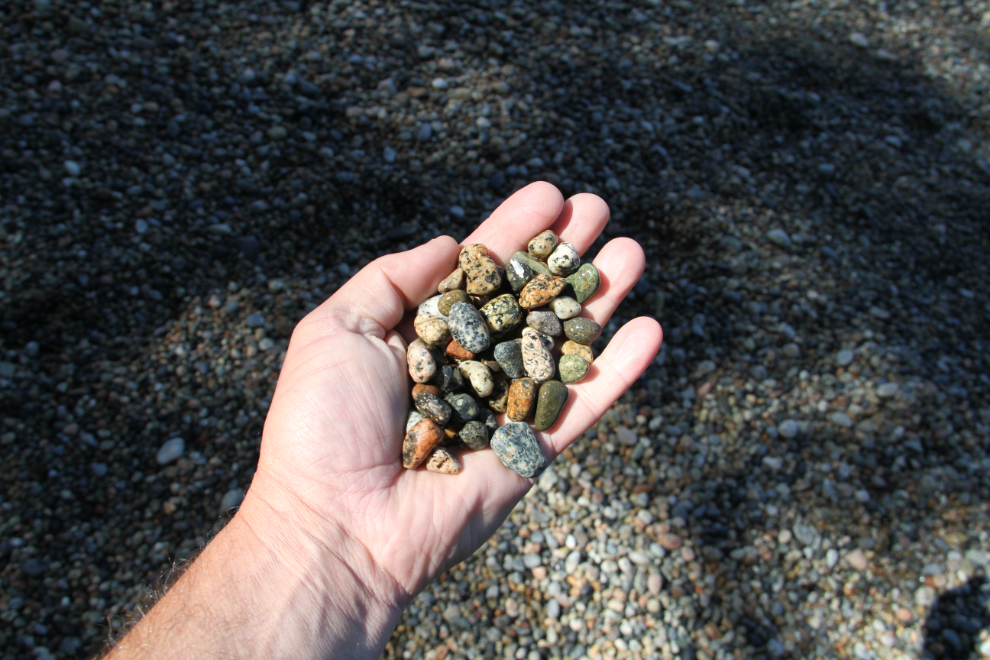
Back up on Highway 101, I stopped to get some photos of the Stillwater water system, with a large pipe that feeds, I expect, from Lois Lake.
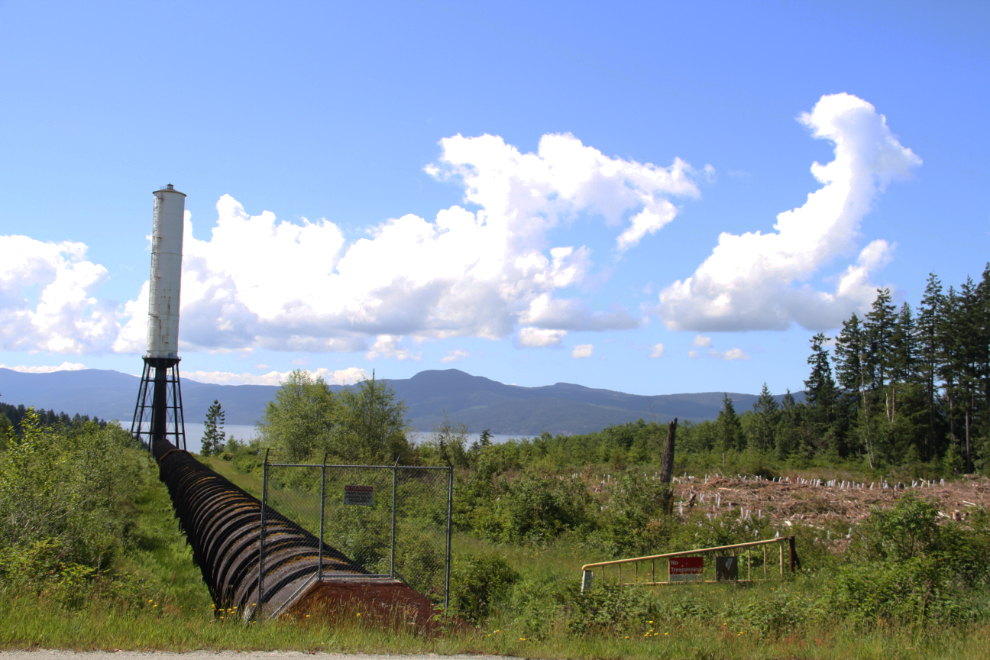
I decided to stop and have another look at the Lois River Canyon, to see if I could figure out a way to see more of it. I wonder how many people who cross this bridge regularly have no idea what’s down there.
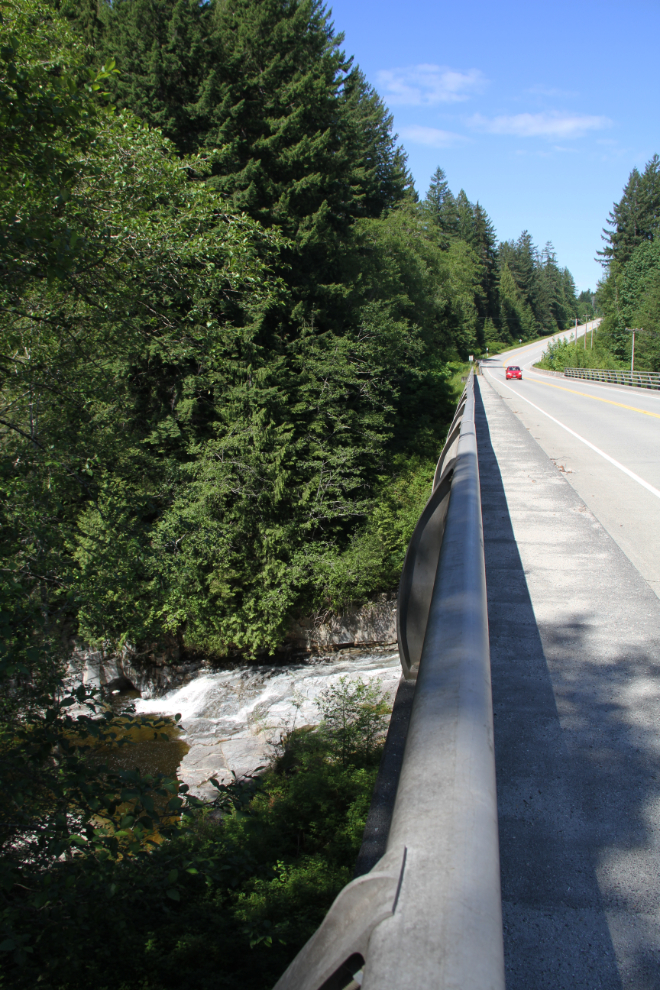
As intrigued as I am by the canyon, exploring it will take more time than I had available. Next trip…
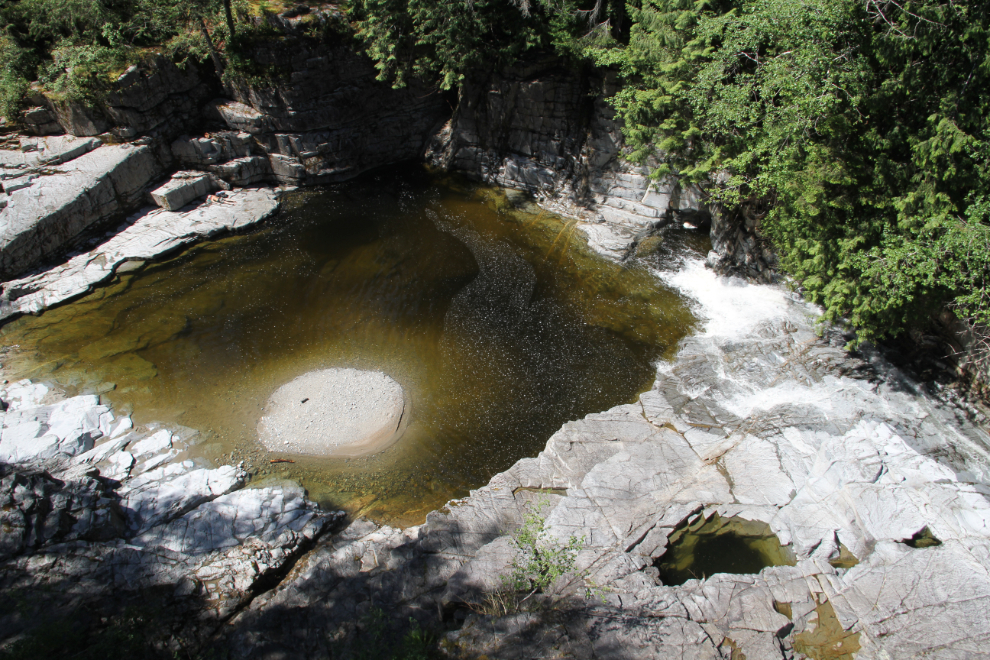
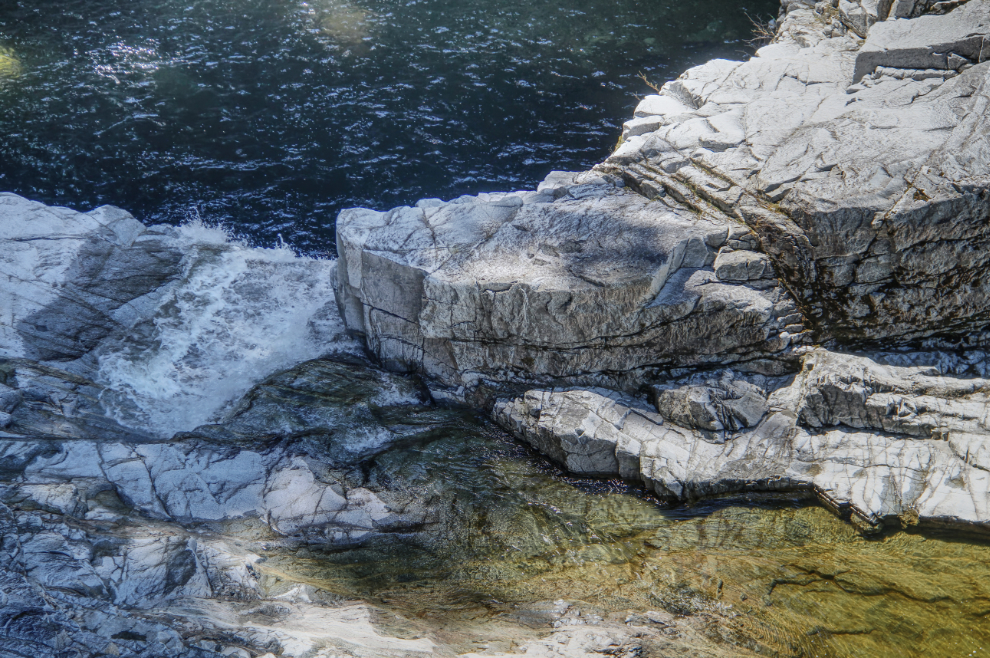
When I got back near the Powell River mill, the light was perfect for having a better look at The Hulks. I thought about chartering a boat to have a really close look. But…
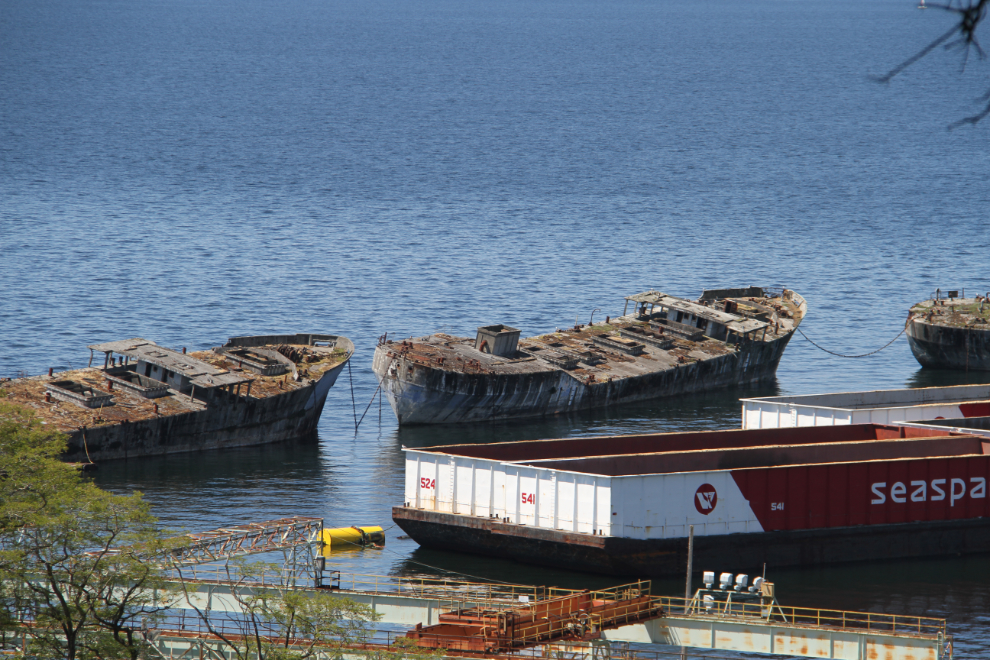
Finally, back to Powell River’s historic Townsite with all the time I need. A plaque erected by the Historic Sites and Monuments Board of Canada near the upper end of the business district describes why it is a National Historic Site: “Powell River is an exceptional example of a professionally planned, single industry town dating from the early modern period in Canadian town planning. The oldest sector, begun in 1910-1911, focuses on the mill, the first newsprint manufacturer in western Canada and, for a number of years, the world’s largest individual producer. Immediately to the east stands the original residential core which marches up the hil in a compact gridiron pattern commonly used in early planned towns. Neighbourhoods, which placed workers in the same occupation together, consist of groups of homes having a small number of standardized designs. As the mill expanded, the original town was extended in the 1920s and additional housing of sympathetic design was constructed to the south along gentle crescents laid out on the heavily forested hillside. Further residential development took place in suburbs located beyond the original townplot. As a result, Powell River’s townsite largely retains its early 20th century appearance. A pioneer in Canadian town planning, the community also illustrates the emergence of an industry of international importance.”
The Hotel Rodmay was getting a paint job, I hope to replace that awful yellow. I went into McKinney’s Pub & Eatery, but they had just re-opened after a licence problem, and food service wasn’t open yet. The Townsite today has few of the commercial necessities of a functioning community, and that illustrates a large part of why it has survived in a historic sense. A new Powell River developed further away from the mill and its terrible smell. With the new town supplying everything needed nearby, there was no reason to bulldoze anything in the Townsite to modernize it.

The front of the hotel is the lower facade facing the mill, which would have been logical when it was built by Andrew McKinney in 1911. An addition to the front was made in 1924, and 20 rooms added to the rear in 1930. The name comes from the second owners, Rod and May McIntyre. They bought it in 1917 when McKinney sold rather than sell liquor as many patrons wanted.
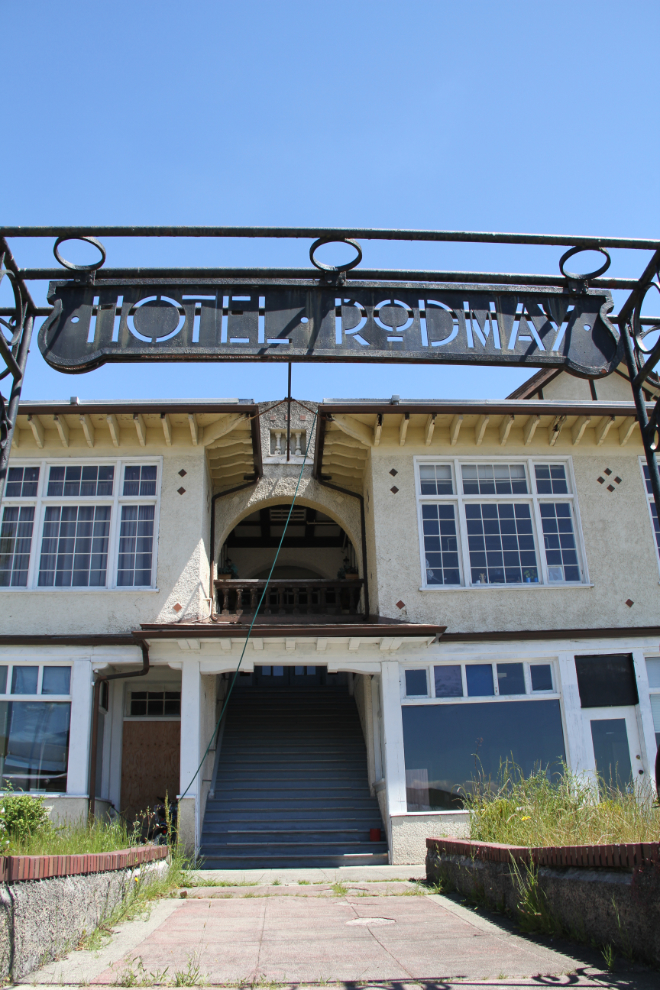
A look at the classic lobby with its grand double-staircase leading to the upper suites overlooking the mill and ocean.
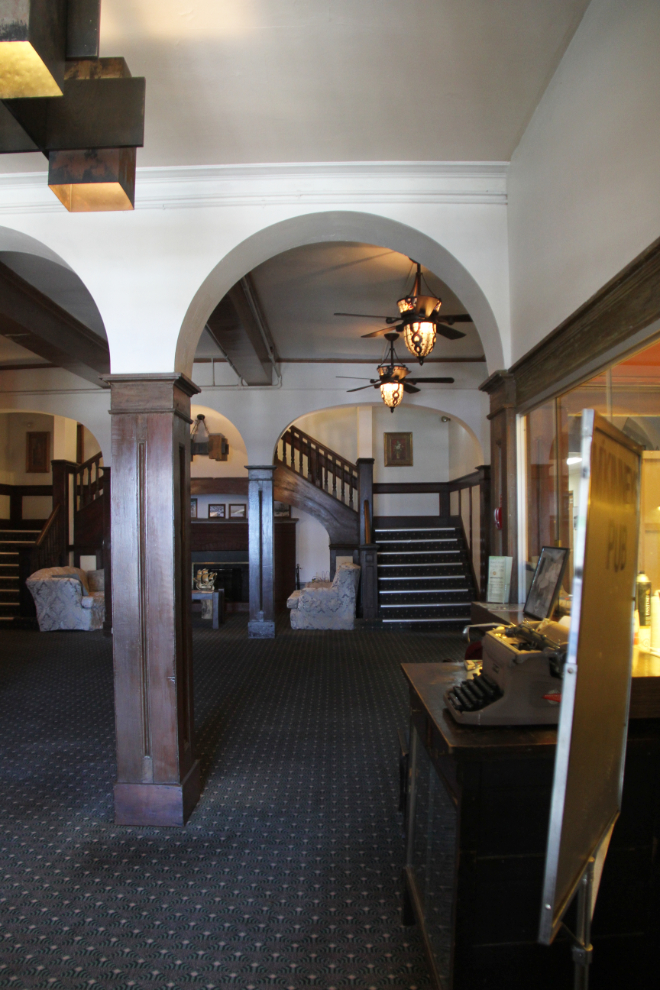
Another commercial gem, at the upper end of the business district, is the Patricia Theatre. Now the oldest continuously-operating movie theatre company in BC, the original opened in a tent in 1911. Two years later, the first Patricia Theatre building was constructed, and the current theatre replaced it in 1928. For the new building, an organist was brought in from Vancouver to entertain patrons during intermissions. Murals of graceful peacocks adorned the walls.
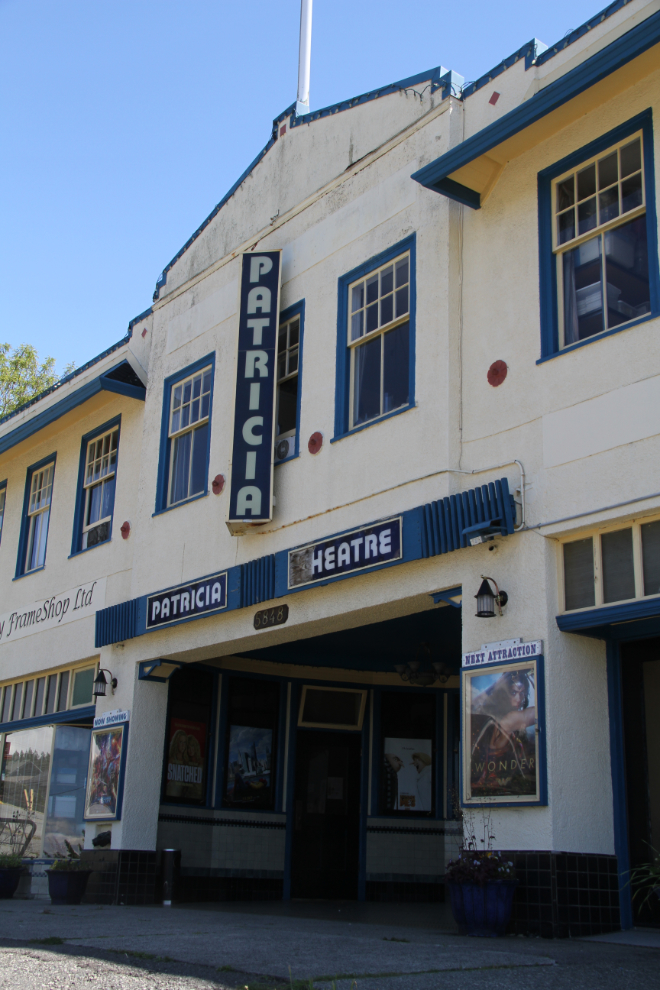
The ticket lobby and entrance have changed very little since 1928. As the theatre is still being used, it’s wonderful to be able to smell popcorn as you stand here, as people would have 89 years ago – not many historic sites can offer that!
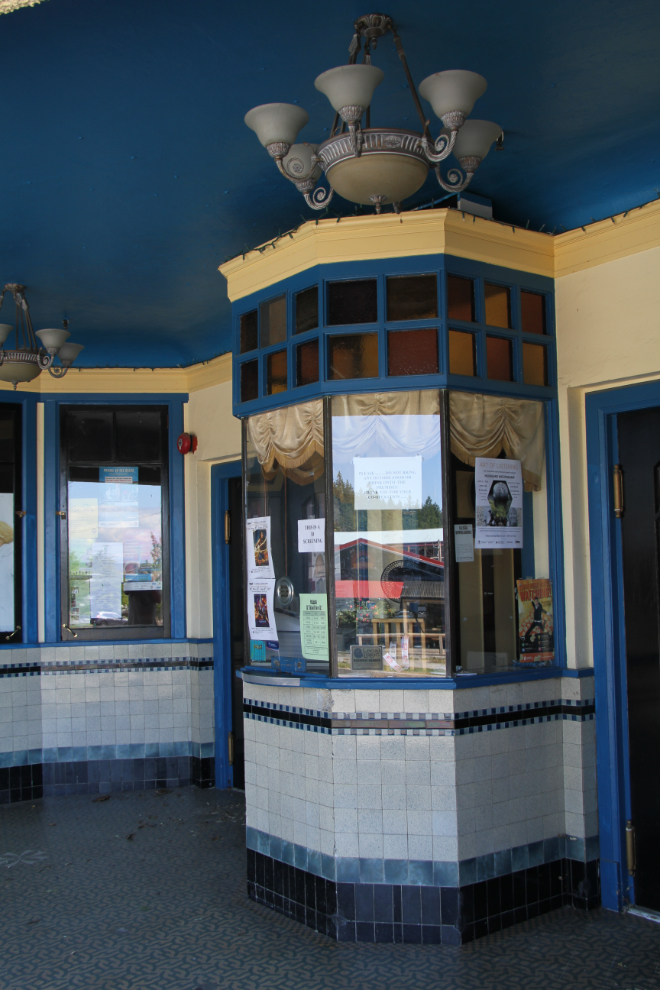
At “Church Corner” are St. Joseph’s Catholic Church, and St. John’s Union Church. The lumber and labour as well as financial support for both churches was donated by the Powell River Lumber Company. Both churches are now privately owned. The next two photos show St. Joseph’s Catholic Church, which is in need of some tlc.
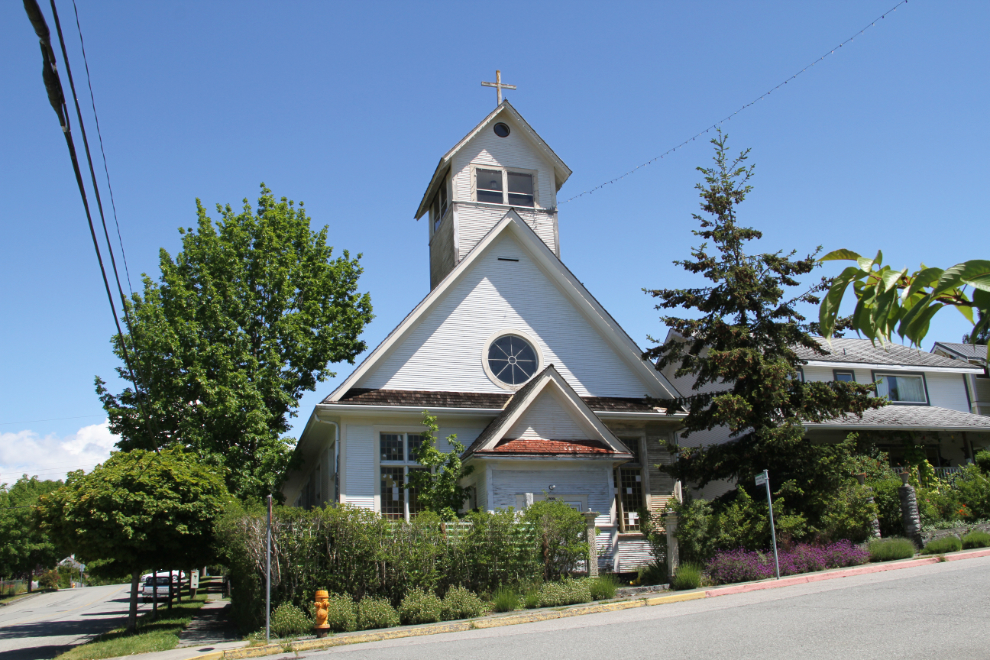
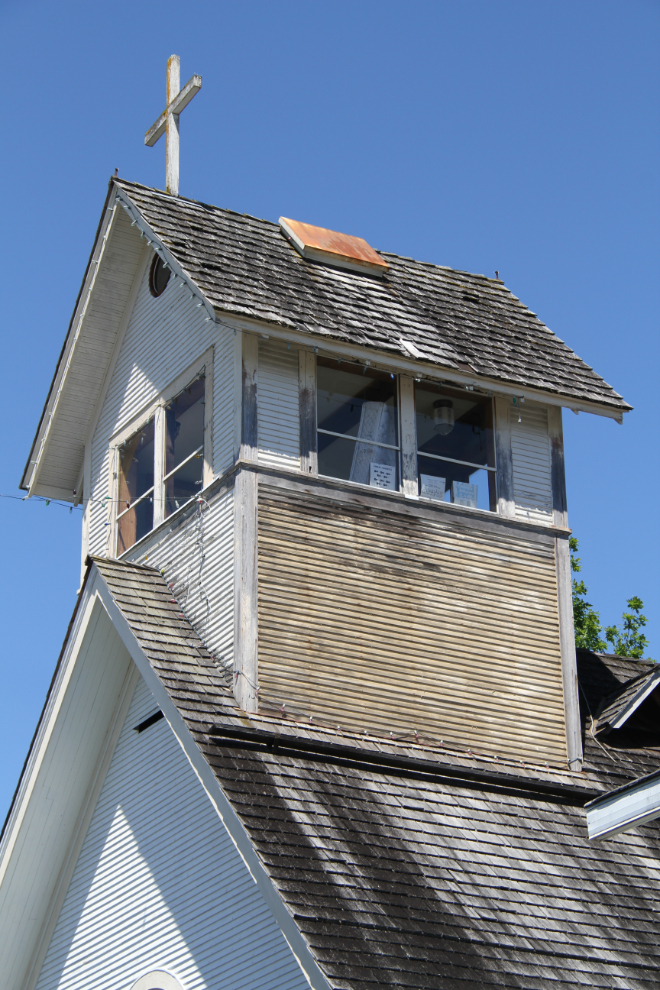
From the churches, I went into a residential area – first the labourers’ homes, then down to the larger management homes overlooking the mill and ocean. There is now a lovely walk slanting gently down the slope in front of the large homes.

The view of the mill from the management homes is largely obscured by trees and rhododendrons now. The smell (“the smell of money”, it was often called) has also been almost entirely eliminated by modern scrubbers, as well as by the downsizing of the mill.
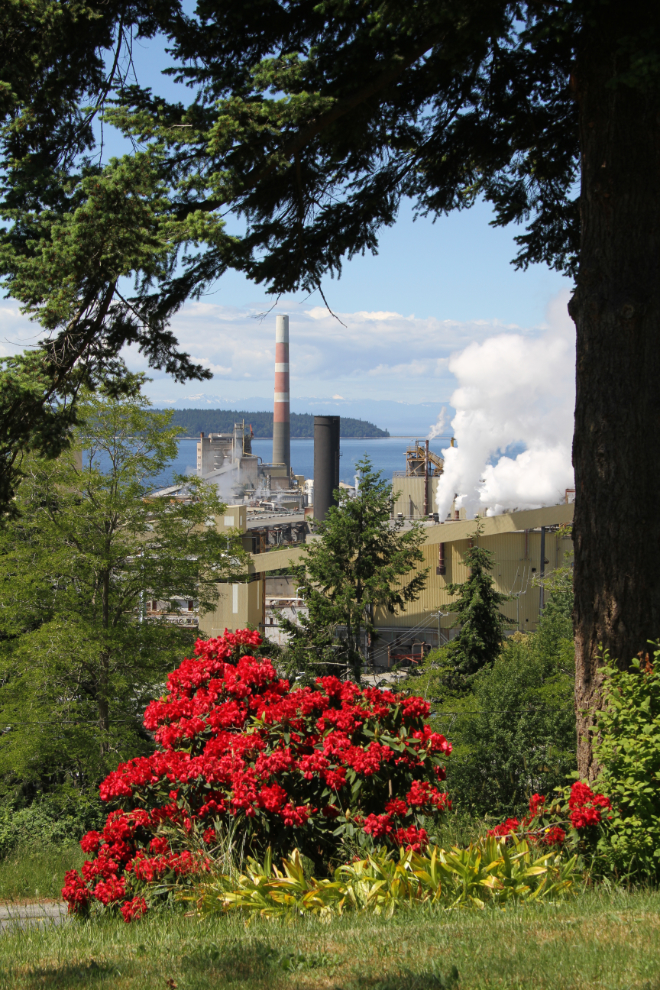
Dwight Hall was built in 1927, and was said to be the finest community hall in the province. It had a stage and a large kitchen, and a dance floor that could accommodate 800 people. Named for Dr. Dwight Brooks, co-founder of the Powell River Company, it was boulght by the District of Powell River in 1957, and is still used by the community today.

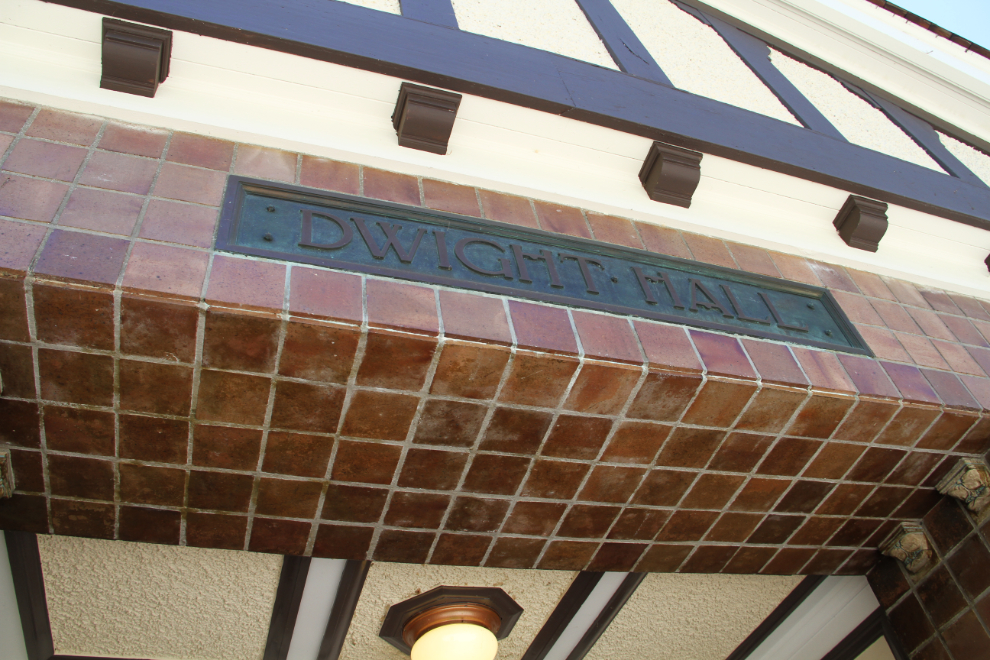
The former Provincial Building was built in Mock Tudor style in 1939, to house the provincial courts and jail, as well as the offices of the BC Provincial Police, the forest service, and many other departments. Today it’s the home of The Old Courthouse Inn.
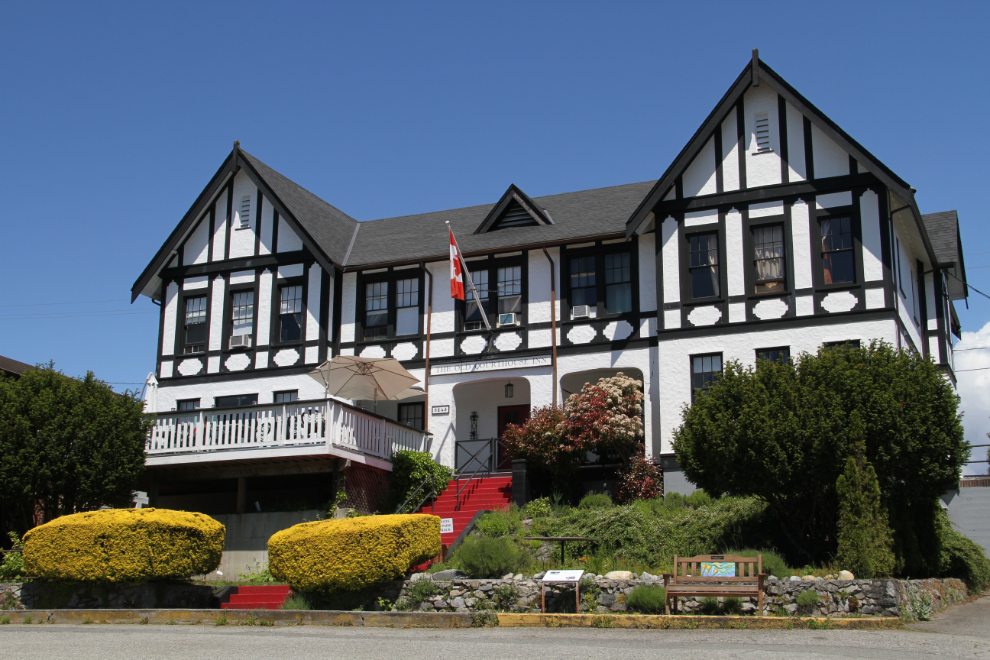
Finally, a look at some of the wonderful detail in the old hospital, which has been converted into apartments. Now happy that I had had a good look at the Townsite and understand its significance, I started back towards Stillwater.

Driving south again, I stopped to get a photo of Willingdon Beach from an angle I hadn’t seen it before.
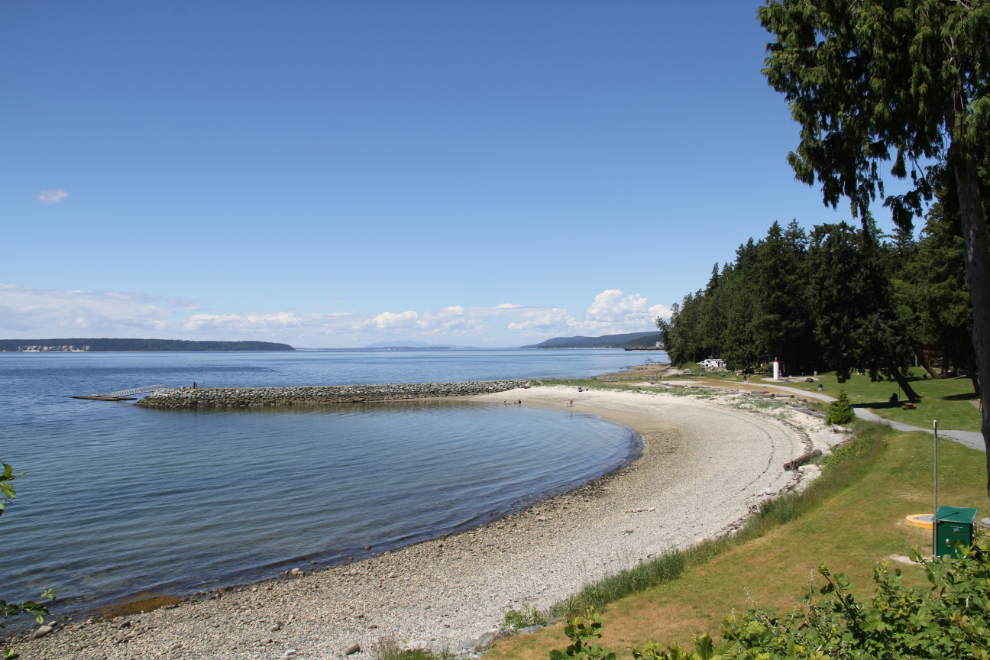
The temperature had risen to about 24°C by the time I got back to the motorhome at 2:00, and it would soon reach 27°C. I decided to take a break and work on my tan instead of my many other projects. Bella and Tucker were happy to stay mostly in the shade – they’d been in the motorhome while I did the morning exploring.
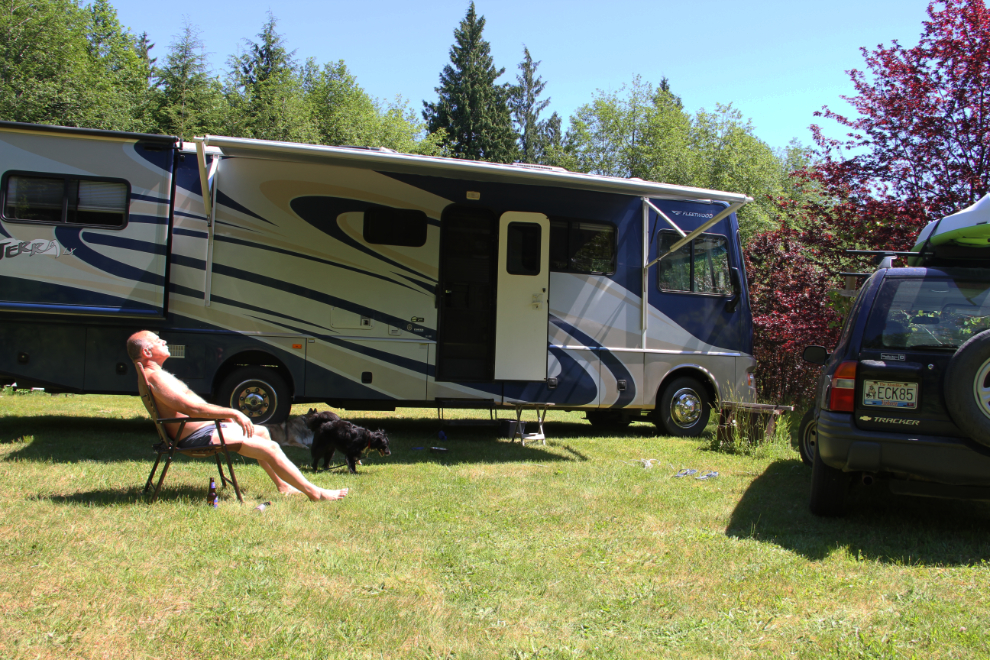
That evening, the dogs and I went to the beach access across the road from the B&B. The next photo shows the beach that’s at the end of that trail.
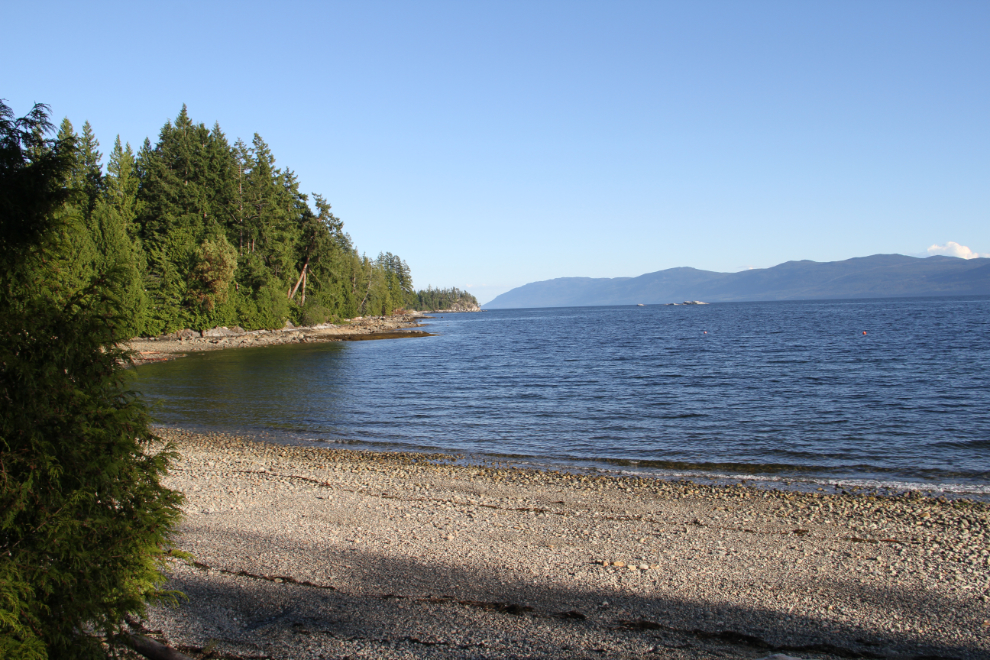
On the opposite side of the highway from the road to the B&B is a logging road that’s signed as an access to the Sunshine Coast Trail and the Powell River Canoe Route. I decided after our little beach walk that we needed to have a look at it. I could add another day here if it was amazing.
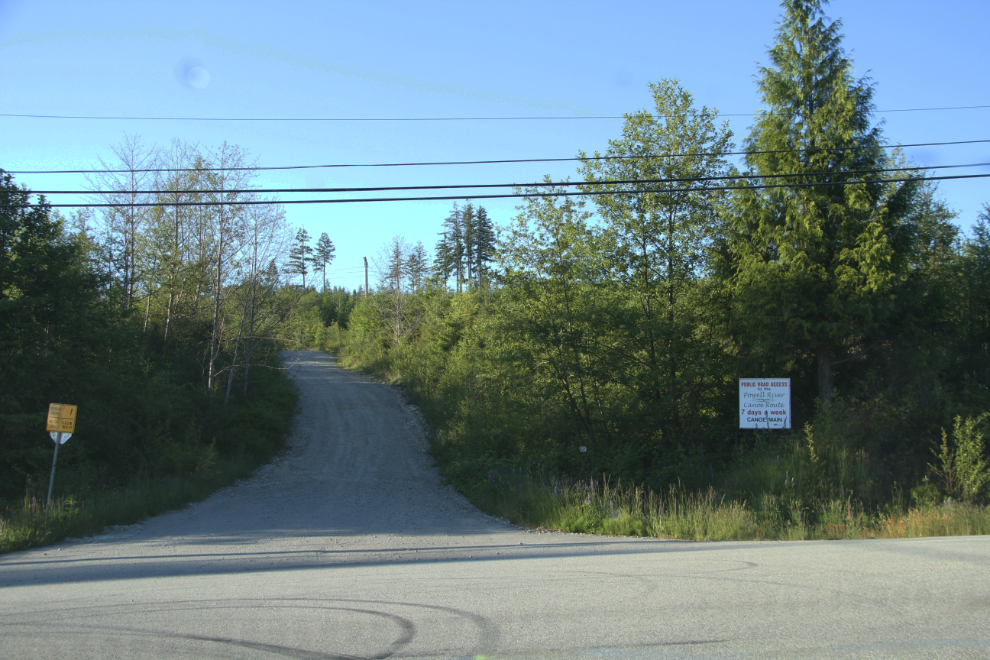
The road is in pretty good condition, passing through a wide variety of logging cut-blocks, second-growth and even a bit of old-growth forest.
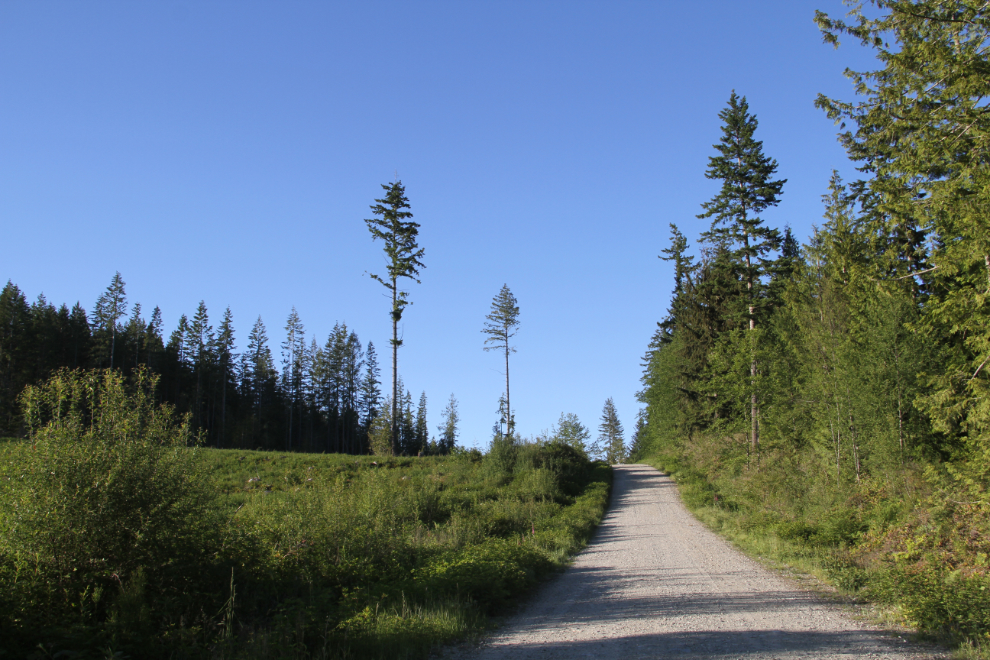
Fifteen minutes after leaving the highway, we reached Lois Lake, where there is a large BC Recreation Site campground. The road wasn’t very big-rig friendly (unless you’re a logging truck), but there was an old 36-foot Class A motorhome there anyway.
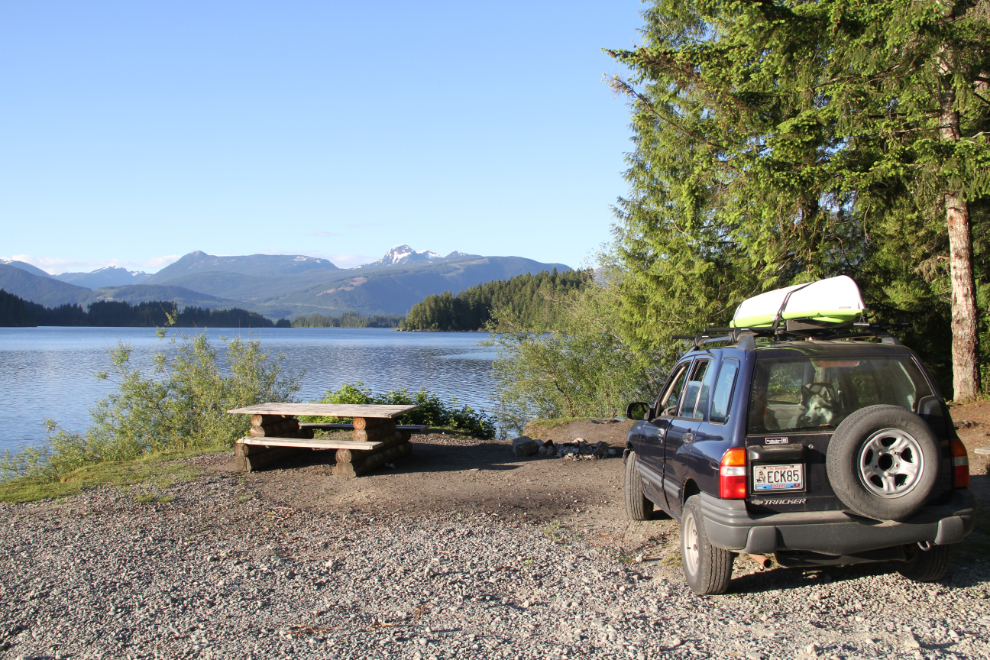
A family of Canada geese was feeding at the shore of Lois Lake about 40 feet away.
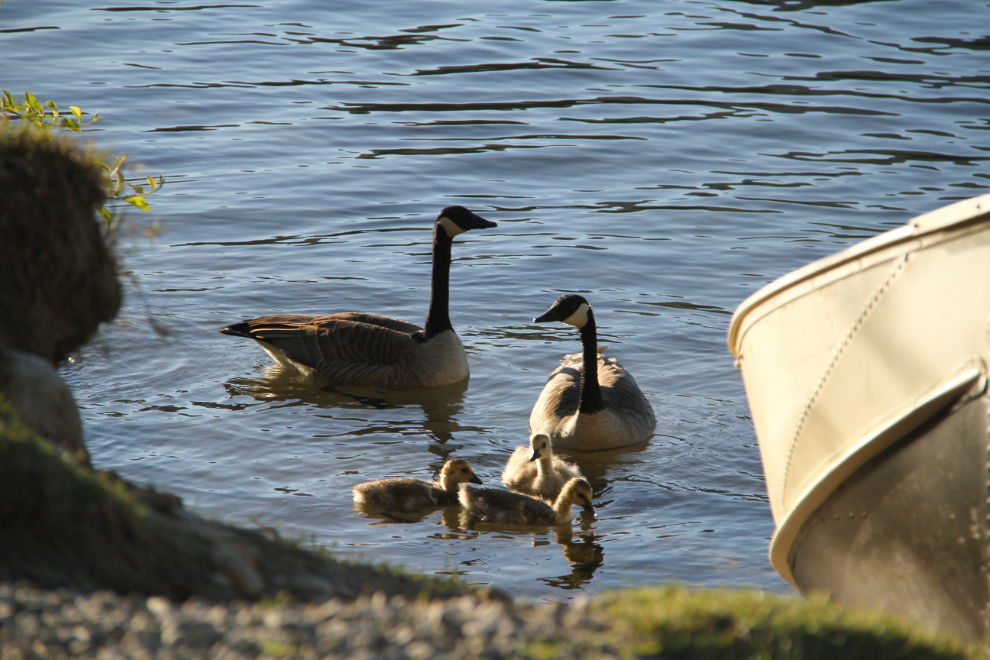
Tucker watched the geese without making a sound. He’s getting better and better about understanding that I really hate small-dog noise as he matures. When he barks and gets corrected he sometimes switches to a funny little growl/natter, but this time there was no sound at all.
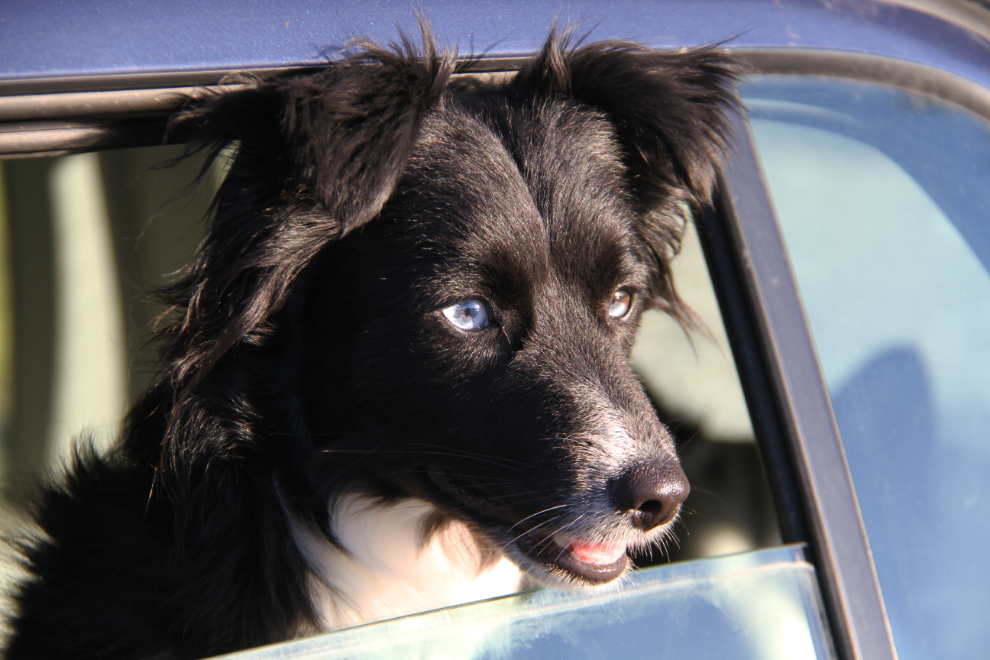
On the way back to the motorhome, I took a different road, and went through this beautiful grove of large timber, some old growth, some second-growth. On the waterfront below this area is Stillwater Bluffs, a similar grove that’s in the process of being permanently saved from logging.

That had been a very enjoyable day, with plenty of variety. I was now as ready as I was going to get to take the next ferry on the following day, to the Lower Sunshine Coast.
